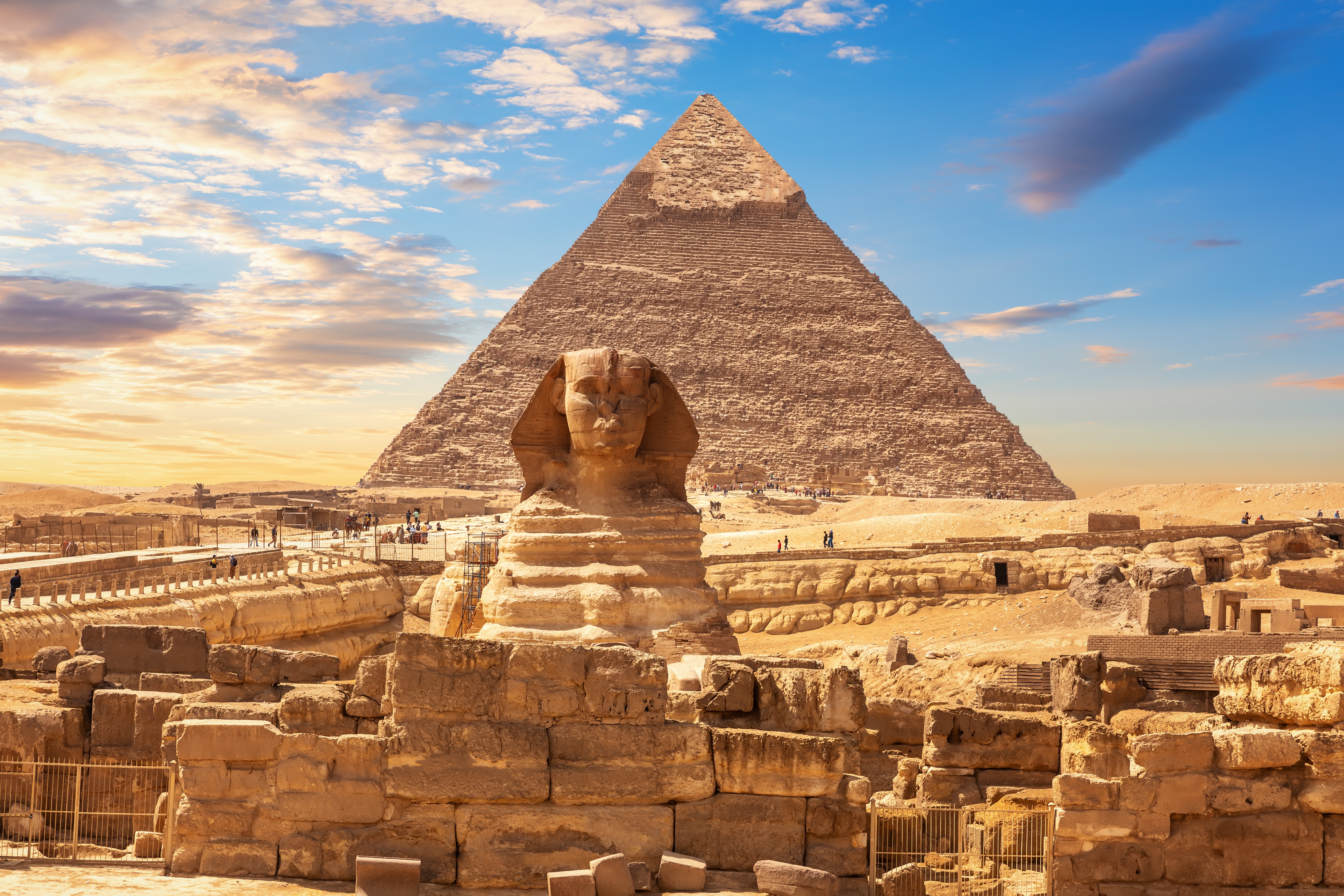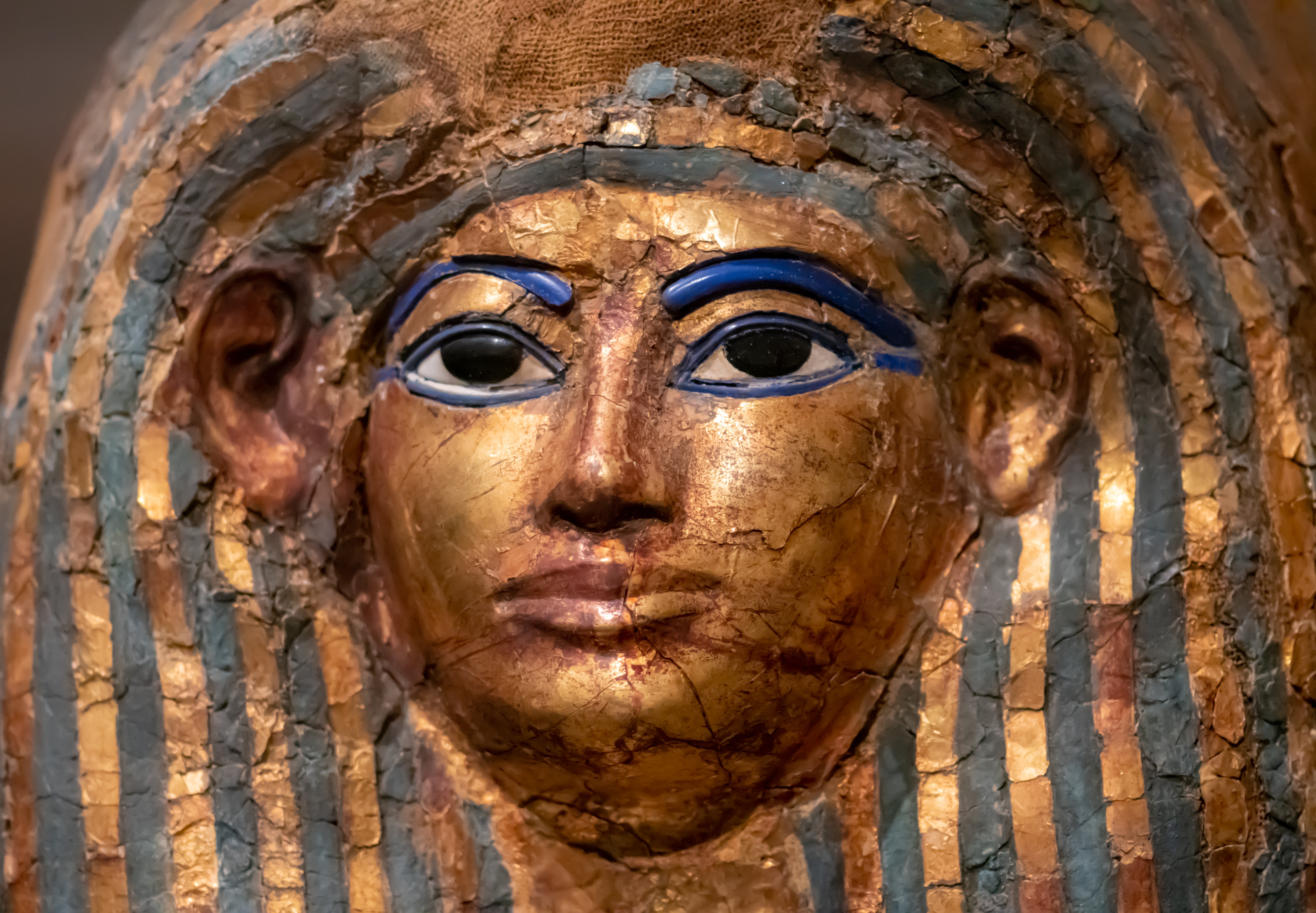The pharaohs of Ancient Egypt are monumental figures in history, symbolising ancient Egypt’s cultural and political achievements. In this guide, we delve into the lives of the most famous ancient Egyptian rulers, uncovering the layers of historical facts and achievements that defined their reigns.
From the first pharaoh who united the lands along the Nile to the celebrated rulers who commissioned the construction of the pyramids, each played a pivotal role in moulding the course of ancient Egyptian history. This informative guide will help you gain a deeper understanding of how pharaohs wielded their power, governed their people, and left behind an indelible legacy that continues to intrigue and educate us today.
Jump to:
Who was the 1st Pharaoh of Egypt?
Historians speculate that Narmer and Menes were two potential candidates for the title of Egypt's first pharaoh. These names may represent two distinct individuals or, as some scholars suggest, they might be different titles for a single king. What is certain, though, is the key role this ruler played in shaping the course of Egyptian history.
The Palette of Narmer, a significant archaeological find, depicts a king believed to be Narmer with the crowns of both Upper and Lower Egypt, suggesting he was the unifier. On the other hand, Menes is credited by ancient historian Manetho for this formidable feat.
Despite the debate, the legacy is clear: the dawn of pharaonic power began with a formidable leader who merged two cultures under a centralised authority.
The Unification and Its Impact
The unification was more than a political manoeuvre; it was a cultural revolution. By merging the distinct traditions and religions of Upper and Lower Egypt, the first pharaoh laid the foundation for what would become a sophisticated and integrated society. This societal alchemy turned kings into gods, and their word became divine law.
The Divine Role of the Pharaoh
The pharaoh was more than a mere mortal ruler; he was a living deity, the intermediary between the gods and the people. His key responsibilities encompassed maintaining Ma'at, the cosmic order, which involved rituals and decrees to balance harmony and prevent chaos. The pharaoh's divine status was crucial in legitimising their rule and ensuring the obedience of their subjects.
Every structure erected, every war waged, and every law passed was under the intention of maintaining divine order. The pharaohs' monumental building projects were not mere displays of wealth and power but acts of righteousness: a pyramid or temple was as much a prayer in stone as a tomb or sanctuary.

The Architecture of Power: Building Egypt's Legacy
In ancient Egypt, the pharaohs did not simply rule; they sculpted the landscape with stone and ambition, creating structures that would withstand the passage of time. Their monumental building projects were grand narratives written in limestone and granite, designed to echo their legacies throughout eternity.
Monuments as Legacies
Each pharaoh aspired to leave behind a legacy that would transcend the ages. Monumental building projects like pyramids, temples, and obelisks were integral to this vision. The pyramids, colossal tombs constructed with mathematical precision and astronomical alignment, were designed to ensure the pharaoh’s ascent to the afterlife. Temples, meanwhile, served as homes for the gods and places where the pharaoh could perform sacred rituals, strengthening the bond between deity and sovereign.
These architectural wonders were not simply a means to demonstrate the pharaoh’s earthly power but were deeply rooted in the religious and cosmological beliefs of the time. The very act of building was a religious endeavour, each structure a prayer that celebrated the gods and secured the pharaoh’s place in the cosmos.
The Step Pyramid of Djoser: A Stairway to the Heavens
As the earliest colossal stone building in Egypt, the Step Pyramid of Djoser is a great example of the architectural ambition of Egypt’s ancient rulers. Constructed during the 27th century BCE for Pharaoh Djoser by his architect Imhotep, it marked a monumental shift from the traditional rectangular mastaba tombs to a more ambitious, vertically-stacking form.
The complex was not just a tomb but a stage for the pharaoh’s eternal rule. Every feature, from the intricate hieroglyphic carvings to the grand courtyards, was designed to perpetuate the pharaoh’s divinity and sovereignty, even in death. The Step Pyramid became a model for future pharaohs, each of whom would seek to outdo their predecessors with even more grandiose projects.

Egypt's Greatest Pharaohs and Their Legacies
The exploits of its rulers illuminate Egypt’s history. Here, we explore a few of Egypt’s most legendary sovereigns and the legacies that celebrated their reigns.
· Khufu: The Pyramid King: Khufu, or Cheops as the Greeks called him, was the visionary behind the Great Pyramid of Giza, one of the Seven Wonders of the Ancient World. Reigning during Egypt's 4th Dynasty around the 26th century BCE, his 20-year rule is somewhat shrouded in mystery, but his ambition and power are clear from the colossal scale of his tomb. The Great Pyramid, originally 146 metres tall, was the tallest man-made structure for over 3,800 years, a testament to Khufu’s authority and the sophistication of Egyptian engineering.
· Hatshepsut: The Queen Who Became King: Hatshepsut, the fifth pharaoh of the 18th Dynasty, is often hailed as one of the most successful female rulers. She initially served as regent for her stepson, Thutmose III, but subsequently assumed full pharaonic power. A flurry of building projects, trade expeditions, and a period of peace and economic prosperity marked her reign. Her mortuary temple at Deir el-Bahri stands as a monument to her reign, with its elegant structure set against the cliffs of Thebes.
· Thutmose III: The Napoleon of Egypt: Thutmose III, the stepson and successor of Hatshepsut, is often referred to as the greatest military pharaoh. His rule saw Egypt's empire peak, with 17 military campaigns in 20 years, expanding its dominion into Syria and beyond. His victories at Megiddo and Nubia are particularly noteworthy for their strategic brilliance. Thutmose III's extensive building programmes and contributions to the Karnak Temple complex solidified his reputation as a builder-pharaoh.
· Ramses II: The Great Builder: Ramses II, also known as Ramses the Great, ruled for an astonishing 66 years during the 19th Dynasty. His era was one of relative peace and stability, which he utilised to construct numerous monuments and temples. His most significant legacy is the temple complex at Abu Simbel, carved into a mountainside, and the Ramesseum—a mortuary temple that featured a 1,000-tonne statue of the pharaoh himself. Ramses’ military exploits, including the Battle of Kadesh against the Hittites, were well-documented, not least by Ramses himself in his inscriptions.
· Tutankhamun: The Boy King Tutankhamun’s significance lies not in his accomplishments, which were modest due to his short and uneventful reign, but in the discovery of his nearly intact tomb in 1922 by Howard Carter. Dying at the age of nineteen, his tomb in the Valley of the Kings provided an unparalleled snapshot into the wealth and artistry of New Kingdom Egypt, sparking a global fascination with ancient Egypt that endures to this day.
Recommended for you!
Best SellersThe Daily Life of an Ancient Egyptian Pharaoh
The life of an ancient Egyptian pharaoh was steeped in ceremonial grandeur, religious duties, and administrative governance. Here's a glimpse into the daily life of a pharaoh:
1. The Morning Rituals: The pharaoh’s day would begin with elaborate rituals. These were not merely for personal hygiene but were laden with religious significance. Priests assisted the pharaoh in these rites, designed to purify and prepare them for their role as the mediator between the gods and the people.
2. Divine Wardrobe: The pharaoh's attire was symbolic, from the iconic double crown, representing the unification of Upper and Lower Egypt, to the ceremonial headdresses, like the Nemes headcloth, worn during rituals. Their clothing, often made of the finest linens and adorned with precious stones, reinforced their divine status.
3. A Regal Diet: The pharaoh would have access to various foods, including bread, meat, fruits, honey, and wine. Meals were not just for sustenance but were a part of religious observance, with the finest offerings reserved for the gods.
4. The Royal Court: The pharaoh ruled over the court, along with a hub of political advisors, high priests, scribes, and nobles. This assembly was instrumental in advising the pharaoh on matters of state, religion, and military.
5. Ceremonial Roles and Political Influence: A pharaoh's day was punctuated by ceremonial appearances and religious ceremonies, reinforcing the divine order. However, they also wielded immense political power, making decisions on laws, trade agreements, and diplomatic relations.
Recommended for you!
Best SellersWhat Are 5 Facts About Pharaohs?
Need some quick-fire facts? Here are five intriguing facts about the life of a pharaoh:
- God-Kings: Pharaohs were considered living gods on Earth. This meant that a pharaoh's decisions were seen as coming from a god, and their commands were followed as divine laws handed down from the heavens.
- Children in Power: Many pharaohs ascended the throne as children and, therefore, had powerful regents who handled the actual governance until they came of age. Tutankhamun, for example, became pharaoh at the age of nine.
- Strategic Marriages: Marriages for pharaohs were often political, intended to solidify alliances within the country, between powerful families, or with foreign powers. These unions were sometimes even with siblings or close relatives, aimed at preserving the divine bloodline.
- Builders of Eternity: Pharaohs were responsible for commissioning the construction of temples, monuments, and, most famously, the pyramids, which were their tombs designed to help them transition to the afterlife and continue their divine rule.
- Beyond Death: The preparation for the afterlife was a critical part of a pharaoh's life, with intricate burial customs and complex tomb designs intended to protect their bodies and spirits. They believed in a life after death where they would continue to play a vital role in the existence of their kingdom.
Delve Deeper with Centre of Excellence
Are you captivated by the grandeur of the pharaohs? At Centre of Excellence, curiosity can lead you to an immersive learning adventure. Our comprehensive Ancient Egyptian Rulers Diploma Course is tailored to guide you through the wonders of pharaonic history, providing rich insights into the civilisation that has fascinated scholars and dreamers alike for centuries. Act now to secure the entire course for just £29, or check out our diverse selection of history courses.












